
We are a locally owned licensed roofing siding and remodeling contractor in San Antonio TX, a trusted provider of roof repair, metal roofing installation, metal roof repair, house remodeling, window installation service and gutter cleaning service.
Friday, June 28, 2024
Eco-friendly Materials - Sky Roofing Construction & Remodeling - Call (210) 942-9797

Eco-friendly Materials - Eco-Friendly Roofing Benefits - Sky Roofing Construction & Remodeling

Eco-friendly Materials - What Makes a Roof Eco-Friendly - Sky Roofing Construction & Remodeling

Eco-friendly Materials - Types of Eco Roofing - Sky Roofing Construction & Remodeling

Eco-friendly Materials - Sky Roofing Construction & Remodeling - Call (210) 942-9797

Eco-friendly Materials - Eco-Friendly Roofing Benefits - Sky Roofing Construction & Remodeling

Choosing Eco-Friendly Materials for Sustainable Roofing Solutions
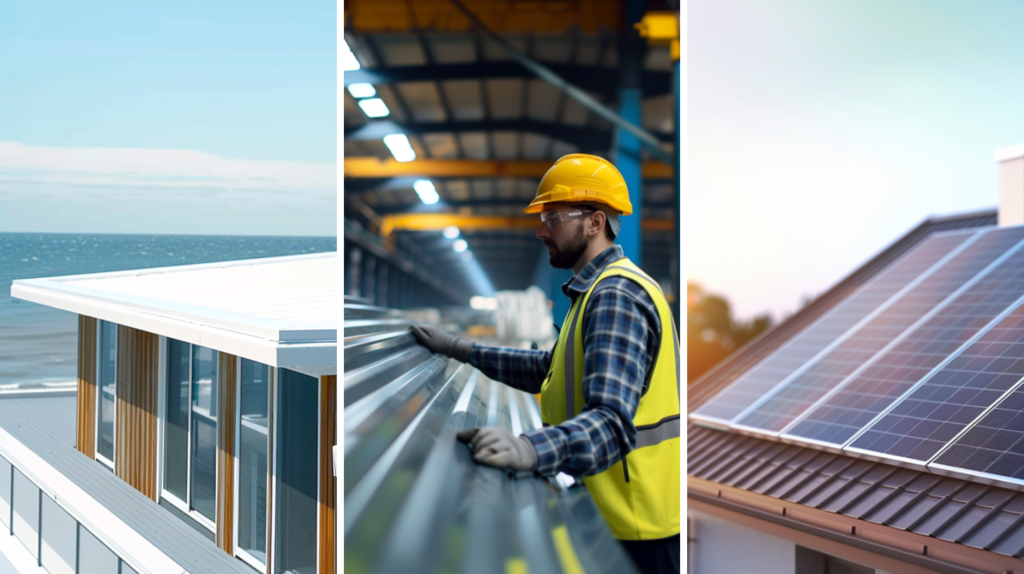
Getting Started with Eco-Friendly Materials
The significance of eco-friendly roofing materials lies in their ability to reduce the carbon footprint and improve energy efficiency. Traditional roofing materials often contribute to greenhouse gas emissions during production, release harmful chemicals into the atmosphere, and contribute to the heat island effect. On the other hand, eco-friendly roofing materials are designed to mitigate these issues.
Homeowners can significantly reduce their carbon footprint by opting for eco-friendly roofing materials. These materials are often made from recycled or sustainable materials, such as reclaimed wood, recycled metal, or rubber from old tires. This reduces the demand for new resources and enhances the circular economy.
Moreover, eco-friendly roofing materials are designed to improve energy efficiency in homes. They provide effective insulation, reducing the need for artificial heating or cooling. This lowers energy consumption and leads to cost savings on utility bills.
Using eco-friendly roofing materials reduces our environmental impact and improves home energy efficiency. Homeowners can contribute to a more sustainable future by choosing these materials while enjoying reduced energy consumption and cost savings.
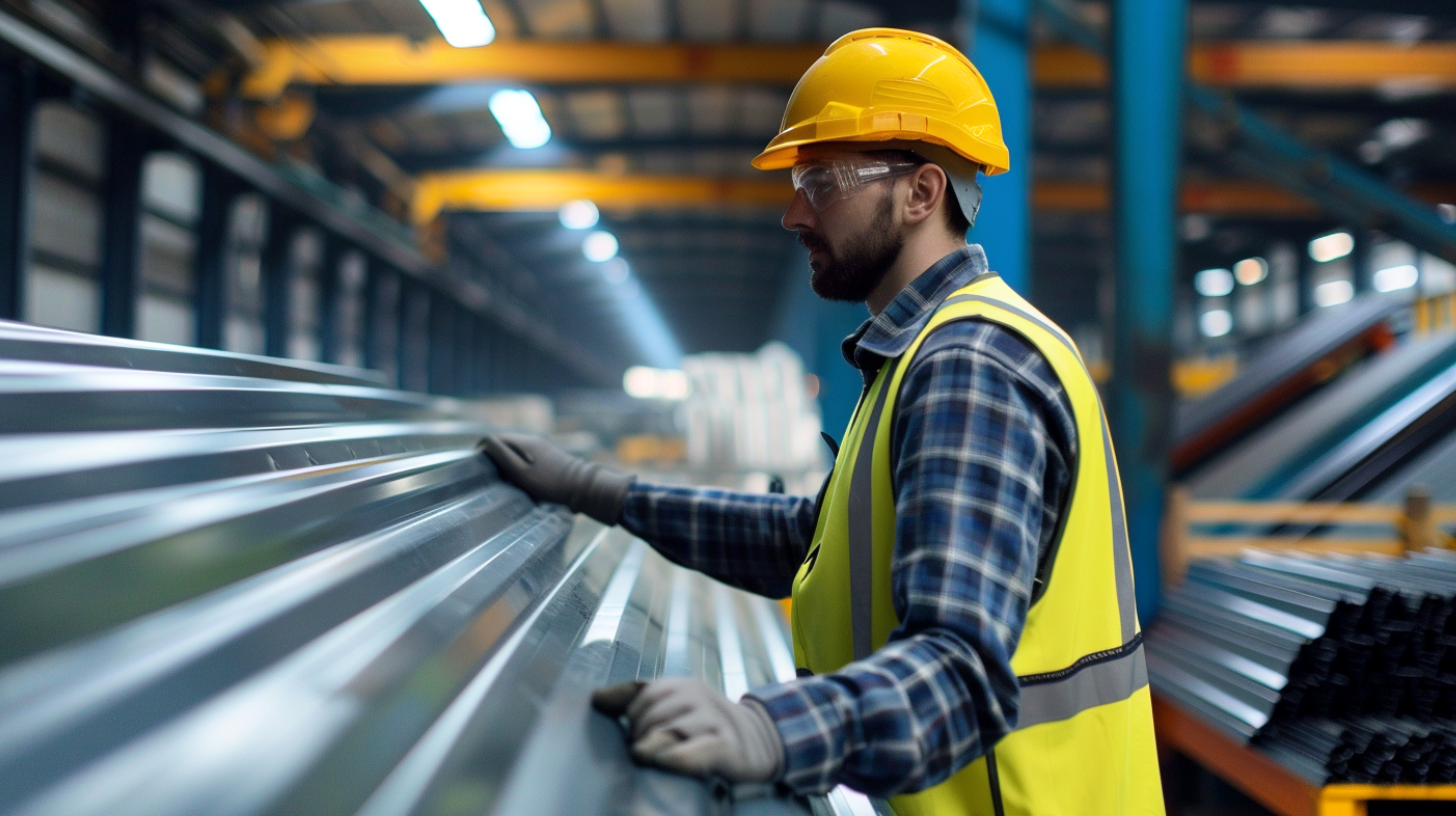
Eco-friendly Materials - What Makes a Roof Eco-Friendly - Sky Roofing Construction & Remodeling
What Makes a Roof Eco-Friendly?
Durability
When discussing the durability of roofing materials, it is essential to consider their ability to withstand various environmental factors. Moisture, wind, fire, flying debris, snow, ice, and hail are common challenges that a durable roof should be able to withstand.
Moisture, including rain, can cause significant damage to roofs if they are not properly built and maintained. A durable roofing material will have excellent moisture resistance, preventing water leaks and potential mold growth.
Strong winds can also pose a serious threat to a roof’s integrity. Roofing materials with high wind resistance can prevent damage such as uplift and detachment, ensuring the roof’s long-term functionality.
Fire safety is another vital aspect to consider. Durable, fire-resistant roofing materials provide a layer of protection to the building, reducing the risk of significant fire damage.
Flying debris, such as tree branches or other objects, can puncture and tear roofing materials. A durable roof should withstand such impacts, maintaining its integrity and preventing leaks.
In regions with heavy snow, ice, or hail, durability is crucial to protect against damages caused by their weight or impact. A durable roof can withstand these elements, minimizing the risk of collapse or necessary repairs.
Prioritizing durability when choosing eco-friendly roofing materials is essential for environmental sustainability. We can ensure a long roof lifespan by selecting materials that can withstand moisture, wind, fire, flying debris, snow, ice, and hail, reducing waste and conserving resources in the long run.
Embodied Energy
Firstly, the production stage plays a significant role. Mining raw materials for roofing products, such as metal, clay, or asphalt, requires energy-intensive processes. These materials then undergo processing, which involves further energy consumption. The extraction, refining, and manufacturing of these materials contribute significantly to the embodied energy of the final product.
Lastly, delivering roofing materials to the end consumer contributes to embodied energy. This includes packaging, storage, and handling, often requiring additional energy resources.
Considering these factors, it becomes evident that reducing embodied energy in roofing products is essential for minimizing environmental impact. Individuals can be crucial in promoting eco-friendly roofing options by choosing materials that require less energy-intensive processes or those sourced locally.
Recycling and Reusability
The importance of recycling in producing eco-friendly roof tiles cannot be overstated. Recycling reduces greenhouse gas emissions, contributing to significant environmental benefits. By diverting materials from landfills, we decrease the release of harmful gases into the atmosphere, reducing air and water pollution. Additionally, recycling saves energy, as producing materials from recycled sources requires less energy than creating them from scratch.
Various sustainable roofing materials manufactured from recycled or sustainable sources are available. Recycled metal, for example, can be utilized to create durable and long-lasting roof tiles, with the added benefit of being 100% recyclable at the end of their lifespan. Rubber and plastic roofing materials made from recycled materials are also increasingly popular, as they offer durability and resistance to harsh weather conditions.
Other sustainable options include sustainably harvested wood shakes from responsibly managed forests and bamboo, a fast-growing and renewable resource. Clay tiles, often manufactured using locally sourced clay, provide an environmentally friendly alternative, as they can be easily recycled or reused after being used on a roof.
Contribute to a Healthy Ecosystem
Unlike traditional roofing materials, eco-friendly options prioritize sustainability and environmental responsibility. They are produced using renewable resources and have minimal impact on the ecosystem during manufacturing. Additionally, they are applied using eco-friendly installation techniques that avoid harmful chemicals.
The benefits of using eco-friendly roofing materials are abundant. First and foremost, they help minimize environmental impact by reducing carbon emissions and waste generation. Individuals can actively participate in preserving biodiversity and the planet’s overall health by choosing these materials.
Furthermore, eco-friendly roofing materials often have a longer lifespan, reducing the need for replacement and the associated environmental costs. They can also promote energy efficiency, reduce a building’s carbon footprint, and help conserve natural resources.
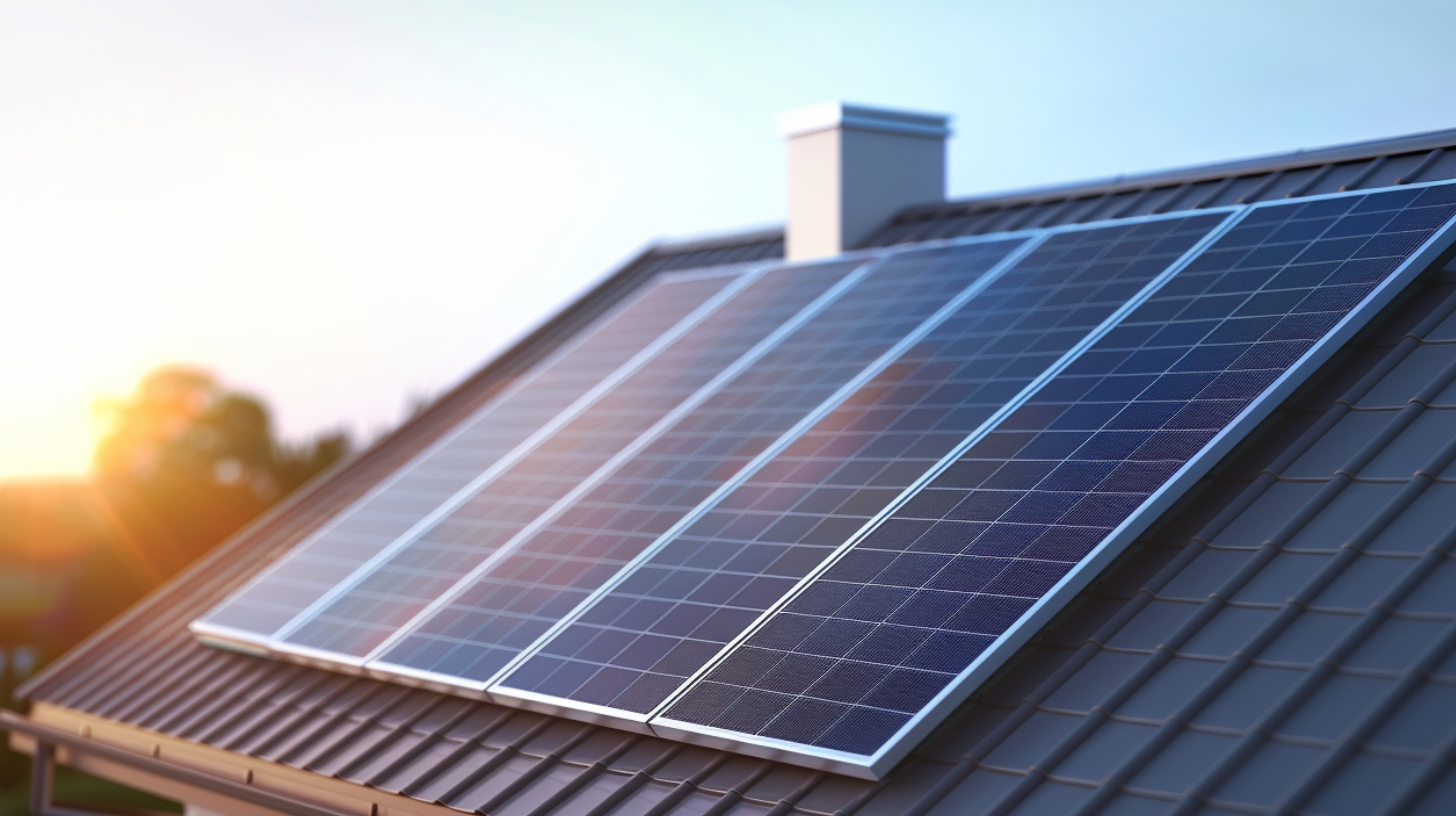
Eco-friendly Materials - Eco-Friendly Roofing Benefits - Sky Roofing Construction & Remodeling
How Eco-Friendly Roofing Benefits Your Home
One significant benefit of eco-friendly roofing is the potential for monthly bill savings. These sustainable materials are designed to provide better insulation, keeping your home cooler in the summer and warmer in the winter. As a result, less energy is required to maintain a comfortable temperature, leading to lower heating and cooling costs.
In addition to cost savings, eco-friendly roofing allows homeowners to reduce their carbon footprint. By using sustainable materials, you are helping to conserve natural resources and reduce harmful emissions. This environmentally conscious choice can significantly impact the fight against climate change.
Furthermore, opting for eco-friendly roofing materials can offer potential tax incentives. Many governments and local authorities provide tax credits or deductions for homeowners who make environmentally friendly choices. These incentives help offset the initial investment and encourage homeowners to choose sustainable home options.
By choosing sustainable roofing materials, you make a responsible and environmentally conscious decision for your home and the planet.
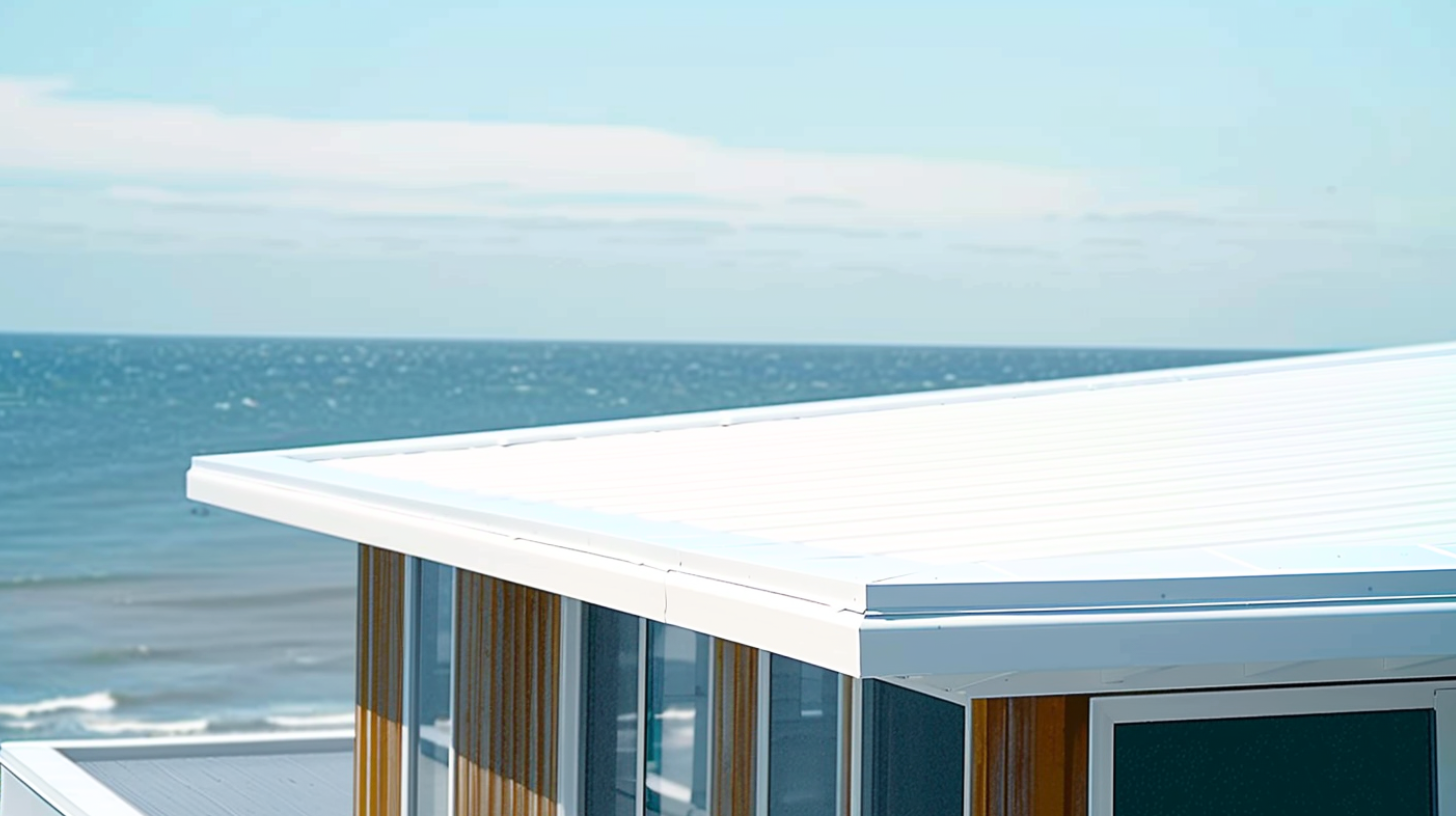
Eco-friendly Materials - Types of Eco Roofing - Sky Roofing Construction & Remodeling
Types of Eco Roofing
Metal Roofing
Another benefit of metal roofs is their energy efficiency. Metal roofs are designed to reflect sunlight, reducing the heat the building absorbs. This reduces the need for air conditioning during the summer, leading to lower energy costs. Additionally, metal roofs have the advantage of allowing snow to cascade off easily, preventing the formation of ice dams in the winter. This helps prevent damage to the roof and reduces the risk of leaks.
Metal roofing also stands out due to its recyclability. Unlike other roofing materials disposed of in landfills, metal roofs can be recycled at the end of their lifespan. This helps conserve natural resources and reduces environmental impact.
Steel, aluminum, and copper are common materials used for metal roofing. Each offers unique advantages in terms of strength, durability, and appearance.
Lastly, metal roofs are fire resistant, providing safety and protection. This feature can give homeowners peace of mind, knowing their roofs can withstand fires and help prevent the spread of flames.
With its durability, energy efficiency, recyclability, and fire resistance, metal roofing is an environmentally friendly choice for any home or building.
Green Roofing
One significant benefit of green roofs is their positive impact on air quality. These roofs act as natural air filters by absorbing pollutants and purifying the surrounding air. Additionally, they contribute to reducing energy costs by providing insulation and reducing the need for air conditioning during hot summer months. This, in turn, helps to mitigate the urban heat effect by keeping cities cooler and reducing the demand for energy-intensive cooling systems.
However, the installation of green roofs can be quite costly. Factors like specialized materials, additional structural support, and professional installation increase costs. Despite this drawback, the long-term benefits of green roofs are significant. These roofs have a longer lifespan compared to traditional roofing materials, reducing the need for frequent replacements. Moreover, the aesthetic appeal of green roofs enhances the overall beauty of a home, blending it harmoniously with the environment.
Recycled Shingles
One of the most significant benefits of using recycled shingles is their durability. These shingles are engineered to withstand harsh weather conditions, including strong winds and heavy rain, ensuring they will last for many years. Additionally, they require minimal maintenance, perfect for homeowners looking to save time and money on roof repairs.
In terms of aesthetics, recycled shingles offer a wide range of colors and styles. This means homeowners can find the perfect shingle to match their exterior design, enhancing their property’s overall curb appeal.
Clay Tiles
In addition to durability, clay tiles provide a wide array of colors and styles, allowing homeowners to achieve their desired aesthetic. From traditional Mediterranean red to contemporary earth tones, clay tiles’ versatility ensures they can complement any architectural style.
Another advantage of clay tiles is their energy efficiency. The natural composition of clay helps regulate indoor temperatures by reducing heat transfer, resulting in lower cooling costs during hot summer months.
The process of making clay tiles also contributes to sustainability. Clay is a readily available material requiring less energy than roofing materials. Furthermore, clay tiles are non-toxic and can be recycled, reducing landfill waste.
However, there are some challenges to consider when installing clay tiles. Due to their weight, additional structural support may be necessary, increasing the installation’s complexity and cost. Clay tiles can also be more expensive upfront than roofing materials, although their durability often offsets this initial investment.
Solar Roofing
One form of solar roofing is solar panels, typically installed on top of existing roofing materials. These panels are photovoltaic cells that capture sunlight and convert it into electricity. Another form is solar tiles, which are designed to look like traditional roofing materials but have solar capabilities. This allows for a seamless integration of solar power into the home’s aesthetic.
However, there are some drawbacks to solar roofing. The installation cost can be relatively high, requiring specialized labor and materials. Additionally, the effectiveness of solar roofing highly depends on the amount of sunlight the area receives. Regions with less sunlight may benefit less from solar roofing than areas with ample sunlight exposure.
Before considering solar roofing, weighing the potential benefits against the cost considerations and necessary sunlight exposure is important. Solar roofing can provide significant energy savings and environmental advantages; some homes or locations may have more suitable options.
White Roofing/Cool Roofing
Several materials commonly used for white roofing are available. These include white tiles, metal roofing with a reflective coating, and white thermoplastic roofing membranes. Each material has unique characteristics and advantages, but they all share the goal of reflecting sunlight and reducing heat absorption.
While white roofing boasts several benefits, it also has some drawbacks. The primary issue is that white roofs tend to get dirty more quickly than traditional dark-colored roofs. This may require frequent maintenance and cleaning to ensure optimal performance and appearance. Another potential drawback is that white roofing materials can be more expensive upfront than conventional ones.
Despite these drawbacks, white roofing remains an excellent choice for buildings exposed to direct sunlight for extended periods. Its energy-saving qualities benefit the environment and provide long-term cost savings for property owners. By selecting white roofing, individuals can contribute to a more sustainable future while enjoying the advantages of reduced energy bills and a more relaxed living or working environment.
Wood Shake Roofing
However, there are some downsides to opting for wood shake roofing. One primary concern is its flammability. Wood shake roofing is highly susceptible to catching fire, especially in areas prone to wildfires or lightning strikes. This can pose a serious risk to homeowners’ safety and well-being.
Moreover, wood shake roofing tends to have a higher price tag than other roofing materials, such as metal roofs. This can deter budget-conscious individuals or those looking for a more affordable option. In addition, wood shake roofing typically has a limited lifespan, lasting around 20-30 years, which means it may require more frequent replacement than other roofing materials.
Is Eco-Friendly Roofing Right For You?
In addition to saving money, eco-friendly roofing allows homeowners to impact the environment positively. Homeowners contribute to the global effort to combat climate change by reducing their carbon footprint. Eco-friendly roofing materials often have lower levels of volatile organic compounds (VOCs) and reduce the need for fossil fuel consumption. This helps to minimize greenhouse gas emissions and lessen the overall demand for non-renewable energy sources.
Furthermore, choosing eco-friendly roofing options may open the door to various tax incentives. Many governments and local authorities offer tax credits or rebates to homeowners who install energy-efficient roofing materials. These incentives provide financial relief and encourage sustainable practices that benefit individuals and the environment.
It is important to note that eco-friendly roofing options vary depending on several factors, including sun exposure, location, structure, and weather conditions. Homeowners should carefully consider these factors to determine the most suitable materials for their needs. Consulting with roofing professionals can help ensure the right choice is made for optimal energy efficiency and long-term sustainability.
Embrace a Greener Future with Eco-Friendly Roofing
Eco-friendly roofing materials are an innovative and sustainable choice that benefits your home and the environment. By opting for eco-friendly roofing materials, you can enjoy improved energy efficiency, a reduced carbon footprint, and long-term cost savings. For expert guidance and to schedule a roofing consultation, contact Sky Roofing Construction & Remodeling (skyroofingconstructiontx.com/) at (210) 942-9797 today. Switch to eco-friendly materials now and contribute to a greener, more sustainable future.
The post Choosing Eco-Friendly Materials for Sustainable Roofing Solutions appeared first on Roofing Contractor San Antonio - Sky Roofing Construction & Remodeling.
from Roofing Contractor San Antonio – Sky Roofing Construction & Remodeling https://skyroofingconstructiontx.com/eco-friendly-materials/
via Sky Roofing Construction & Remodeling
Wind Resistance - Sky Roofing Construction & Remodeling - Call (210) 942-9797

Wind Resistance - How Wind Resistance Affects - Sky Roofing Construction & Remodeling

Wind Resistance - Effects of Wind Resistance on Roofing - Sky Roofing Construction & Remodeling

Wind Resistance - Roofing Materials that are Wind Resistant - Sky Roofing Construction & Remodeling

Wind Resistance - Effects of Wind Resistance on Roofing - Sky Roofing Construction & Remodeling

Understanding Wind Resistance in Roofing: A Guide for Homeowners
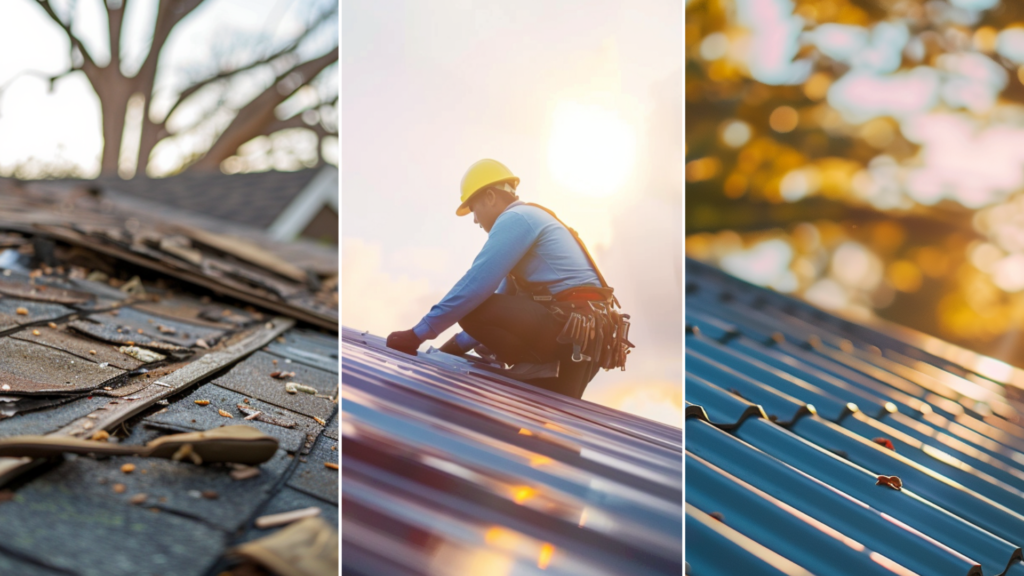
Definition of Wind Resistance
Wind resistance, or wind uplift resistance, is crucial when planning a roofing renovation. Wind resistance refers to the ability of a roof system to withstand the forces of wind without failing or experiencing damage. Understanding wind resistance is essential to ensure the overall stability and longevity of the roof, as well as the occupants’ safety and the property’s protection. By comprehending the concept of wind resistance, homeowners and contractors can make informed decisions, select appropriate roofing materials, and implement proper installation techniques to minimize the risk of wind-related issues such as leaks, uplift, or detachment.
Importance of Understanding Wind Resistance in Roofing Construction
Understanding wind resistance is crucial in roofing construction, as it directly impacts a roof’s structural integrity and durability. Wind can exert enormous forces on a roof; if it is not designed to withstand these forces, it can lead to severe damage, leakage, and even collapse.
Wind resistance is significant for the performance of cyclone-prone areas or regions with solid wind patterns. The wind has the potential to create uplift forces on a roof. If these forces are not adequately mitigated, the roof can be lifted off and detached from the building, leaving the entire structure vulnerable to further damage.
Several factors contribute to wind resistance in roofing. The frontal area, the roof’s total area facing the wind, dramatically affects the wind resistance. Additionally, air density and wind speed also play a significant role. Higher wind speed and lower air density increase the overall wind pressure on the roof, further emphasizing the need for a robust, wind-resistant design.
Understanding wind resistance in roofing construction allows homeowners and contractors to choose appropriate roof materials and designs. This includes opting for materials that withstand high winds, such as impact-resistant shingles or metal panels. Implementing proper installation techniques and regularly inspecting and maintaining the roof can significantly enhance its wind resistance.
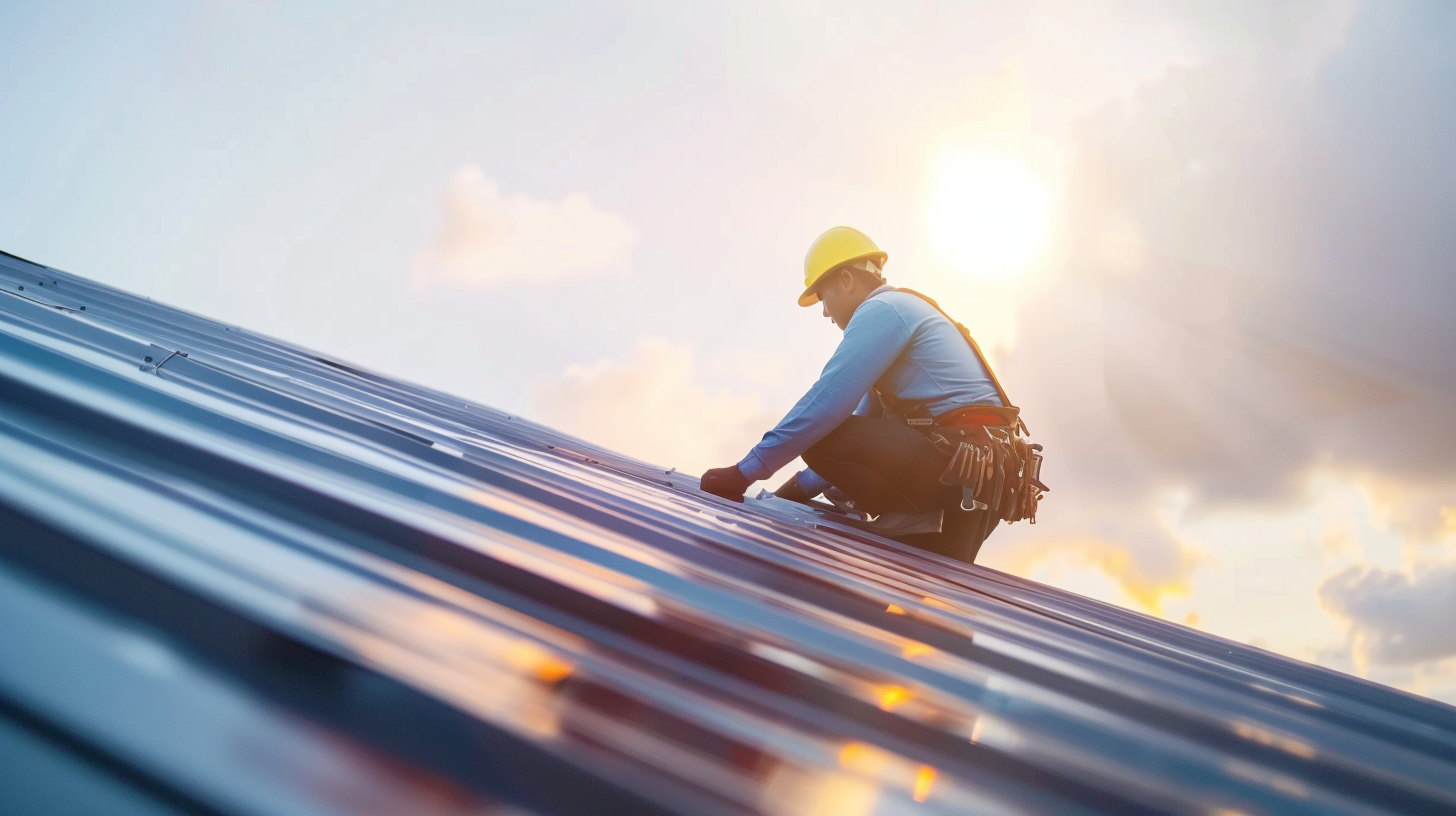
Wind Resistance - Effects of Wind Resistance on Roofing - Sky Roofing Construction & Remodeling
Effects of Wind Resistance on Roofing
When it comes to roofing renovations, one factor that often gets overlooked is wind resistance. Understanding the effects of wind turbines is crucial for ensuring the durability and longevity of your roof. Wind can exert tremendous pressure on a roof, leading to potential damage and costly repairs if the structure is not built to withstand catastrophic wind. Considering wind resistance during a roofing renovation can save you from future headaches and expenses. The completely wind-resistant structure can handle branches in the wind without sustaining damage.
Impact of Wind Resistance on Roofing System
Wind resistance is crucial to a roofing system’s durability and overall performance. Essentially, wind exerts a powerful force on the surface of a roof, and the structure’s ability to withstand this force is determined by its wind resistance and water repellency.
Roofs designed and built with a solid understanding of wind resistance and water repellency can offer several benefits. Firstly, they can withstand high wind speeds without sustaining significant damage. This is crucial in areas prone to intense storms or hurricanes, where wind speeds can reach destructive levels. By effectively resisting the force of the wind, roofs can stay intact, preventing water leaks and other potential damage. Moreover, roofs with highly water-resistant materials can prevent water infiltration during heavy rains.
Furthermore, understanding wind resistance enables homeowners to select suitable roofing materials and designs. Certain materials and components offer better airflow management, reducing the uplift pressure caused by wind passing over the roof. Proper airflow control ensures that the roof remains firmly in place, minimizing the risk of shingle or tile loss. In addition, selecting materials with faster speeds of water runoff can further protect the roof’s integrity.
Ultimately, comprehending wind resistance and water repellency before undertaking a roofing renovation project ensures that the chosen system is built to withstand the force of wind and stand the test of time. By investing in a wind-resistant and water-repellent roofing system, homeowners can enjoy peace of mind, knowing that their roof is equipped to handle whatever nature throws its way. This investment can also reduce energy expenditure by maintaining a stable interior temperature and preventing energy loss due to roof damage.
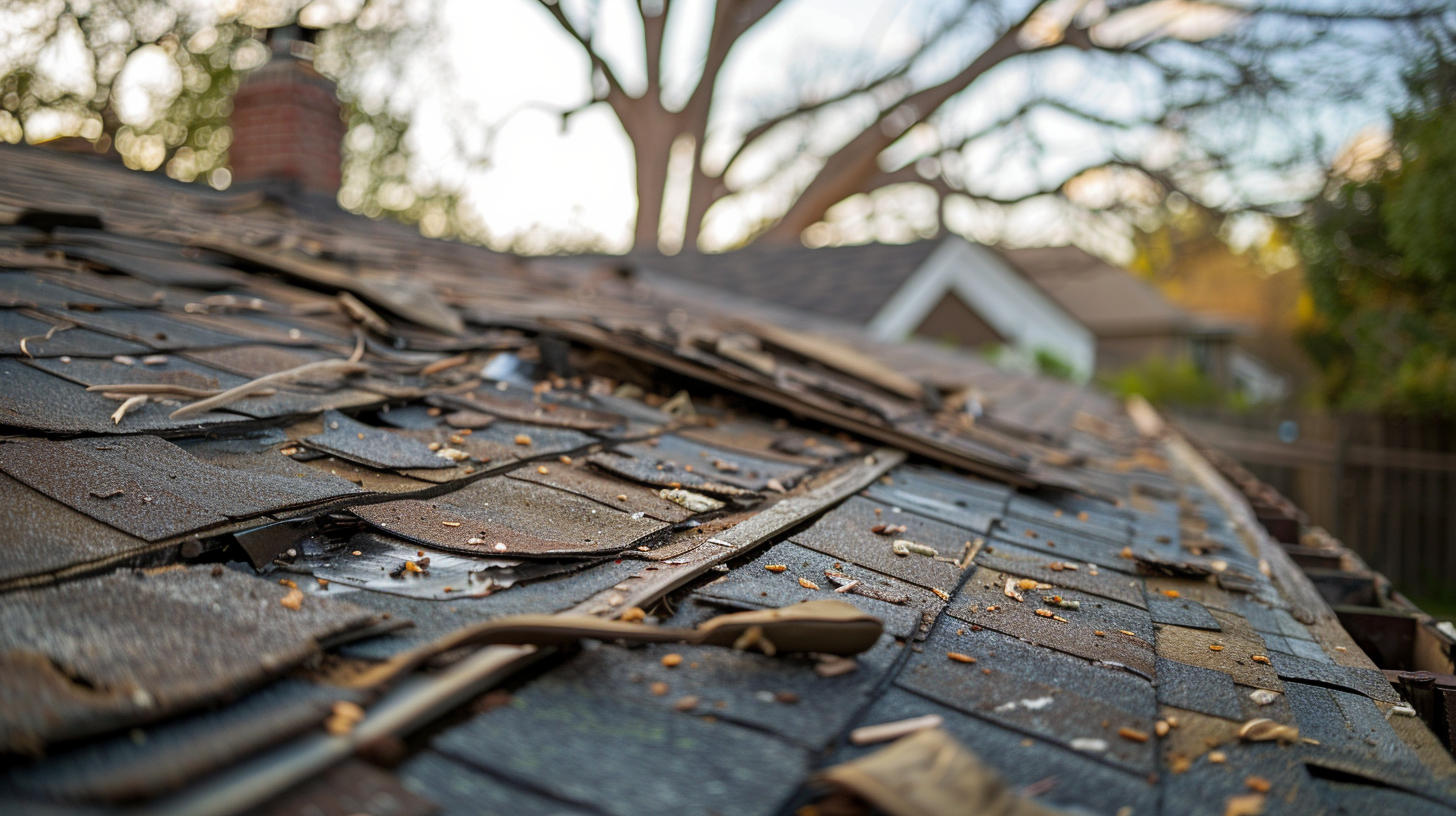
Wind Resistance - How Wind Resistance Affects - Sky Roofing Construction & Remodeling
How Wind Resistance Affects the Efficiency of Roofing System
Wind resistance plays a crucial role in determining the efficiency of a roofing system during renovations. Understanding and considering the depths of wind resistance is essential to ensure a durable and robust roofing system capable of withstanding strong winds and minimizing damage.
The impact of wind resistance on a roofing system’s performance is significant. As wind speed increases, so does the aerodynamic drag and the force exerted on the roof. A lack of wind resistance can lead to structural damage, uplift, or even complete failure of the roofing system. By incorporating wind resistance measures, the efficiency and longevity of the system can be significantly improved.
Several key factors contribute to wind resistance in roofing systems. These include the design of the roof shape, the quality and installation of roofing materials, and the appropriate use of fasteners and connections. Proper flashing and sealing techniques are crucial to prevent wind-driven rain from entering the interior.
Strategies for improving wind resistance should be implemented to enhance a roofing system’s efficiency. This may involve choosing roofing materials that withstand high winds, such as impact-resistant shingles or reinforced membranes. Utilizing appropriate fastening techniques and regularly inspecting and maintaining the roof is essential for ensuring optimal wind resistance. Moreover, wind power enthusiasm has driven roofing technology advancements that improve wind resistance and energy efficiency.

Wind Resistance - Roofing Materials that are Wind Resistant - Sky Roofing Construction & Remodeling
Roofing Materials that are Wind Resistant
When undertaking a roofing renovation, one crucial factor to consider is wind resistance. Understanding the benefits and advantages of wind resistance in roofing materials can significantly impact the durability and safety of your home or building. Selecting wind-resistant roofing protects your property against solid winds, storms, and other adverse weather conditions. By empowering yourself with knowledge about wind resistance, you can make informed decisions and choose the most suitable roofing materials for your renovation project.
Metal Roofing
Metal roofing is becoming increasingly popular for homeowners due to its numerous benefits and advantages. Not only does it offer exceptional durability and longevity, but it also provides cost-effectiveness in the long run. One key advantage of metal roofing is its wind resistance, making it ideal for areas prone to strong gusts and storms.
Metal roofing can be made from several materials, including steel, aluminum, and copper. Each material has unique characteristics and suitability for various climates. Steel is known for its strength, making it an excellent option for areas with high wind speeds. Aluminum is lightweight yet highly resistant to corrosion, making it ideal for coastal regions. On the other hand, copper offers a distinctive aesthetic appeal and is well-suited for historic or architectural buildings.
The installation process of metal roofing involves several steps:
- The roof surface must be prepared by removing existing shingles or materials.
- The metal panels are fastened securely to the roof using screws or nails.
- The seams between the panels are sealed to ensure water tightness and to enhance wind resistance.
Asphalt Shingle
Asphalt shingles are a popular roofing material known for their durability and affordability. Understanding wind resistance is crucial when installing or repairing asphalt shingles.
Installing asphalt shingles begins with preparing the roof deck by removing the old shingles and repairing any damage. Tools such as a roofing nailer, hammer, utility knife, and ladder are essential for a successful installation. Additionally, materials like roofing underlayment, starter strips, shingles, and roof vents are necessary to ensure a proper and effective installation.
When it comes to asphalt shingles, there are three main types to consider – three-tab, architectural, and designer shingles. Three-tab shingles are the most basic and familiar, offering a simple and uniform appearance. Architectural shingles are thicker and offer a more dimensional and textured appearance. On the other hand, designer shingles come in various shapes, sizes, and patterns, providing a unique and luxurious look to a roof.
Selecting asphalt shingles involves several key considerations. Durability is paramount, as shingles should withstand harsh weather conditions, including strong winds. Color options match the overall aesthetic of the property. Warranties are essential to ensure the longevity and quality of the shingles. Wind resistance is a vital factor to consider, as wind events can cause severe damage to the roof if the shingles are not designed to withstand high winds.
Asphalt shingle maintenance includes regular inspection to identify any signs of damage or wear. Cleaning the shingles periodically helps maintain their appearance and prevents algae or moss growth. Promptly addressing any damages, such as loose or missing shingles, is crucial to avoid further issues.
Slate Roofing
Slate roofing is renowned for its durability, longevity, and timeless beauty. Made from natural stone, slate roofs have a variety of characteristics that make them highly desirable for homeowners. The installation involves careful precision, as each slate tile needs to be individually secured to the roof. This meticulous process ensures optimal wind resistance, as the overlapping tiles create a strong barrier against the force of the wind.
Different types of slate are used in roofing, including traditional slate, synthetic slate, and composite slate. Color, size, thickness, and texture should be considered when choosing slate for a roof. Traditional slate offers an authentic and elegant appearance, while synthetic and composite slate provides a more affordable and lightweight alternative.
The benefits of slate roofing are numerous. Besides its aesthetic appeal, slate is fireproof, resistant to insects and rot, and can withstand extreme weather conditions, including high winds. However, there are a few disadvantages to consider, such as its high cost and weight and the need for skilled professionals for installation and maintenance.
Proper maintenance, regular inspections, cleaning, and replacing damaged tiles can ensure that a slate roof lasts for over a century. Thanks to its interlocking design, slate roofing exhibits excellent wind resistance. This resistance helps protect the roof from wind-related damages, ensuring peace of mind for homeowners in areas prone to strong winds.
Sky Roofing Construction & Remodeling: Ensuring Wind Resistance for Your Roof
Wind resistance is a critical factor in roofing renovations, ensuring the durability and safety of your home. Understanding and prioritizing wind resistance allows you to select the best materials and techniques for your roofing project. Contact Sky Roofing Construction & Remodeling (https://skyroofingconstructiontx.com) to schedule a consultation and ensure your roof is built to withstand the most brutal winds—call (210) 942-9797 today.
The post Understanding Wind Resistance in Roofing: A Guide for Homeowners appeared first on Roofing Contractor San Antonio - Sky Roofing Construction & Remodeling.
from Roofing Contractor San Antonio – Sky Roofing Construction & Remodeling https://skyroofingconstructiontx.com/wind-resistance/
via Sky Roofing Construction & Remodeling
Severity of Damage and Its Impact on Roof Repair Costs
Understanding the Link Between Severity of Damage and Repair Costs The severity of damage significantly impacts roof repair costs,...
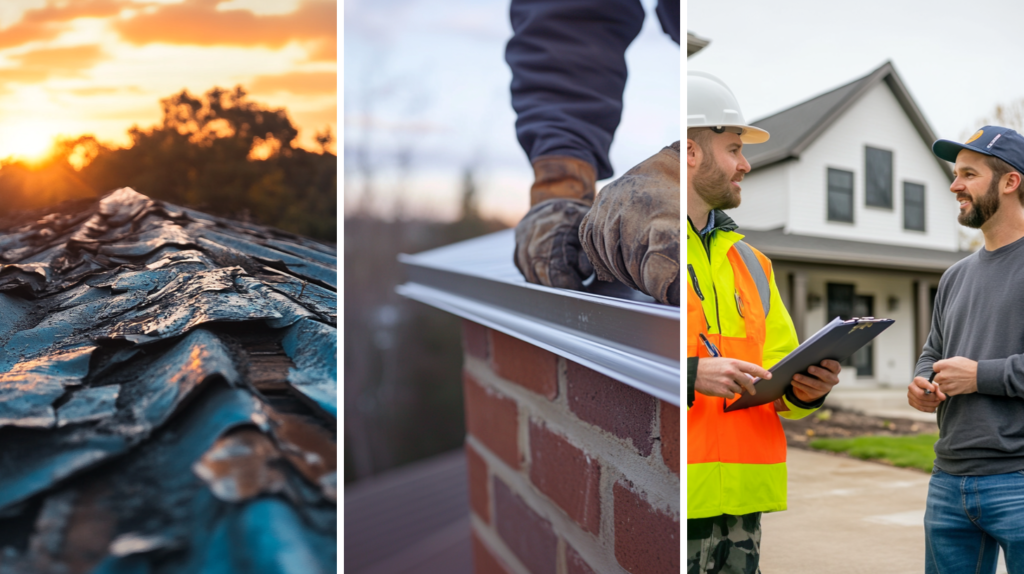
-
Material purchase is a critical step in the roofing installation process that significantly impacts your roofing system's durability, a...
-
Understanding roof measurements is a crucial first step in obtaining an accurate roof estimate report when undertaking a roofing project. U...
-
Watch video on YouTube here: https://youtu.be/WlAKmsED2CQ via Sky Roofing Construction & Remodeling